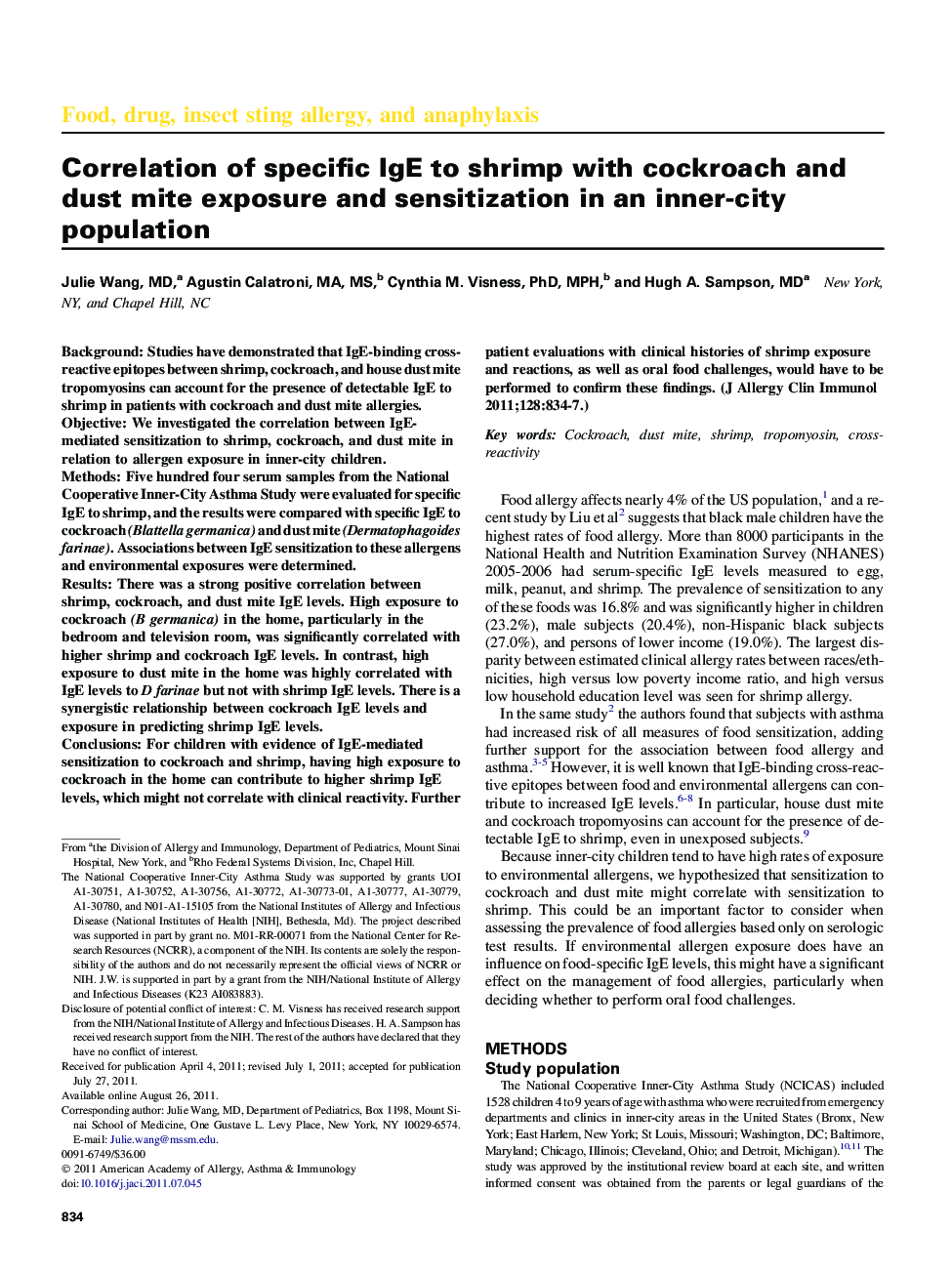| Article ID | Journal | Published Year | Pages | File Type |
|---|---|---|---|---|
| 3199452 | Journal of Allergy and Clinical Immunology | 2011 | 4 Pages |
BackgroundStudies have demonstrated that IgE-binding cross-reactive epitopes between shrimp, cockroach, and house dust mite tropomyosins can account for the presence of detectable IgE to shrimp in patients with cockroach and dust mite allergies.ObjectiveWe investigated the correlation between IgE-mediated sensitization to shrimp, cockroach, and dust mite in relation to allergen exposure in inner-city children.MethodsFive hundred four serum samples from the National Cooperative Inner-City Asthma Study were evaluated for specific IgE to shrimp, and the results were compared with specific IgE to cockroach (Blattella germanica) and dust mite (Dermatophagoides farinae). Associations between IgE sensitization to these allergens and environmental exposures were determined.ResultsThere was a strong positive correlation between shrimp, cockroach, and dust mite IgE levels. High exposure to cockroach (B germanica) in the home, particularly in the bedroom and television room, was significantly correlated with higher shrimp and cockroach IgE levels. In contrast, high exposure to dust mite in the home was highly correlated with IgE levels to D farinae but not with shrimp IgE levels. There is a synergistic relationship between cockroach IgE levels and exposure in predicting shrimp IgE levels.ConclusionsFor children with evidence of IgE-mediated sensitization to cockroach and shrimp, having high exposure to cockroach in the home can contribute to higher shrimp IgE levels, which might not correlate with clinical reactivity. Further patient evaluations with clinical histories of shrimp exposure and reactions, as well as oral food challenges, would have to be performed to confirm these findings.
